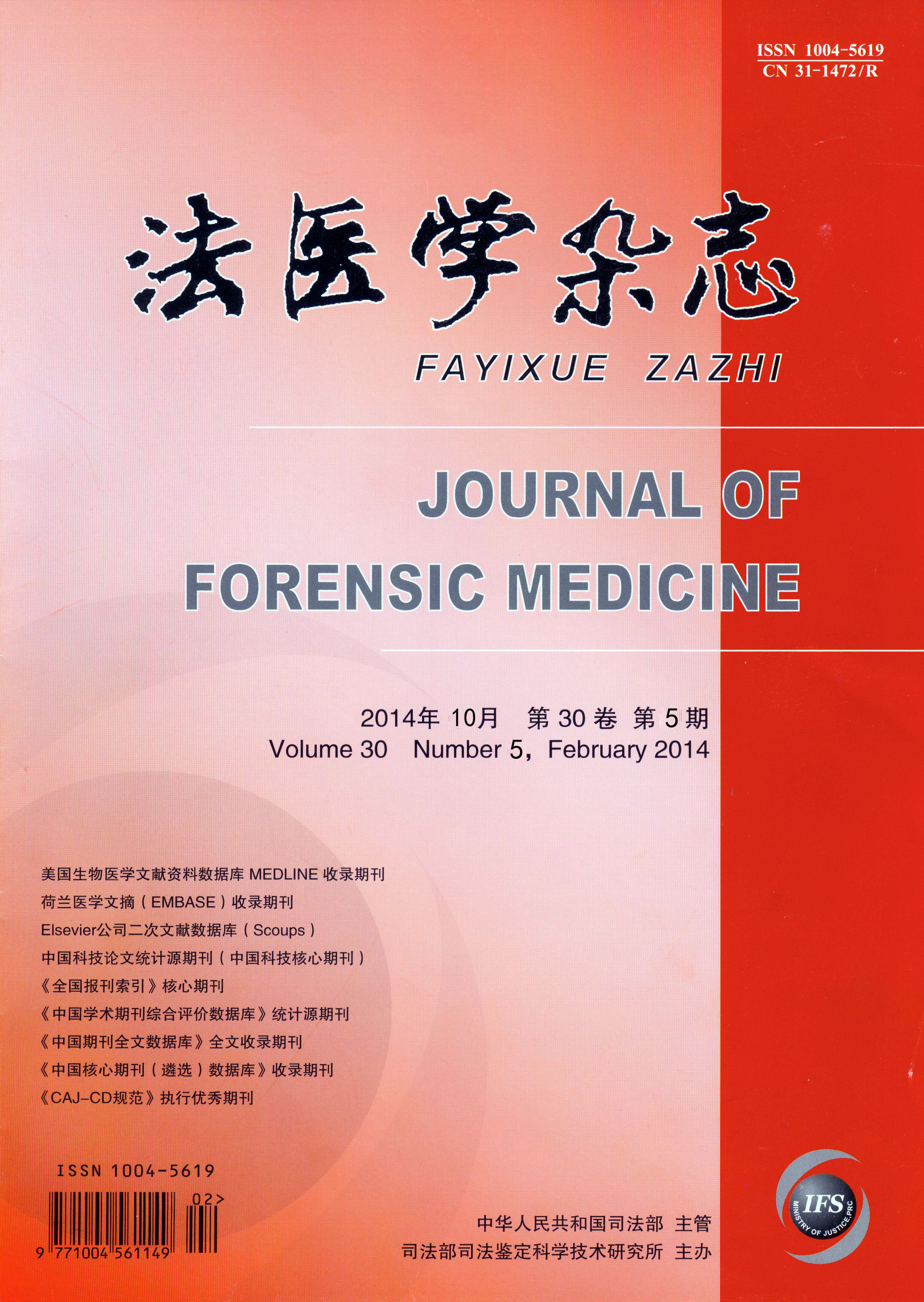|
|
Role of Acute Alcohol Poisoning and Craniocerebral Trauma in the Mechanism of Death Caused by Subarachnoid Hemorrhage
TANG YI-KUN, SHI MENG, 欧GUI-SHENG , ET AL.
2014, 30(5):
325-328.
DOI: 10.3969/j.issn.1004-5619.2014.05.002
Objective To investigate the relation between the expression of tPA, MMP-2, MMP-9 and AEG-1 in the human brain tissue and the ethanol concentration under the acute alcohol poison, and to analyze the role of alcohol and trauma in the mechanism of death of subarachnoid hemorrhage. Methods Fifteen real cases were collected in this study. The brain tissues were researched by histological examination and the concentration of ethanol in heart blood were detected. The tPA, MMP-2, MMP-9 and AEG-1 in brainstem, brain and cerebellum were observed respectively by immunohistochemistry. Results In alcohol poisoning groups with or without trauma, the acute alcohol toxicity resulted in the swelling of brain tissues. The tPA, MMP-2, MMP-9 and AEG-1 of brainstem, brain and cerebellum showed high expression in alcohol victims, and the tPA in cerebellum showed no difference. The expression of the MMP-2, MMP-9 and AEG-1 showed good relation with the ethanol concentration in blood (P<0.05, r>0.6). Conclusion The expressions of tPA, MMP-2, MMP-9 and AEG-1 are significant higher in alcohol victims, and expressions of MMP-2 and MMP-9 and AEG-1 have positive correlation with the alcohol concentration. The alcohol has acute toxicity to brain cells.
Related Articles |
Metrics
|


